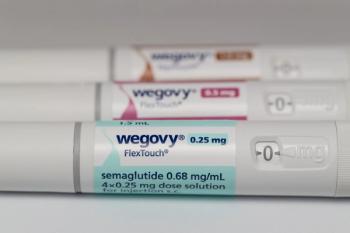
LDL-C and PCSK-9: New Horizons for Treating Residual CV Risk
The explosion of data regarding residual risk and contributions from LDL-P predicts an exciting future. Right now, treatment regimens are in flux awaiting further details on LDL-P interventions and a host of new drugs.
In
What’s at stake? Despite the efficacy of statins and other drugs, there is a 70% or greater residual risk after they are prescribed and taken appropriately. Since the expense and burden of cardiovascular disease is rising, what else is in the pipeline?
Despite multi-pronged efforts aimed at affecting residual cardiac risk, there does not seem to be much that is novel on the LDL-P front-at least not yet. One provocative area that addresses another risk factor is research on PCSK-9 inhibitors. PCSK-9 is a gene. Loss of function in the PCSK-9 gene is associated with a low LDL-C level from birth. Obviously, low levels of LDL-C translate into protection from CV disease.1,2 It is not clear whether there are any significant changes in LDL-P.
Are there ways in which to favorably manipulate this gene in an effort to mitigate residual risk? Animal trials (mice and monkeys) have demonstrated that an anti-PCSK9 antibody can lower LDL-C levels.1,3 A
Most of preceding discussion has focused on the risks consequent to LDL-C and LDL-P. HDL (remember, the higher the better) may become important in risk prevention as well. Niacin is the most effective HDL-raising drug, but it is associated with flushing, itching, and intolerance.1 A new agent, laropiprant-a selective inhibitor of the receptor that causes the flushing-was combined with niacin in the Heart Protection-2 THRIVE Trial.6 It provided no benefit on the primary end point and will not be marketed.7,8
It's nice to foresee the future, but what can be improved in practices today? Lipid experts are incorporating LDL particle analysis into their measurement and treatment strategies.4 Using the Framingham Offspring Study, 5th, 20th, 50th, and 80th percentile risk level cutpoints are available for LDL-C, apolipoprotein B (Apo-B), and LDL-P. For example, an LDL-C of 100 or an Apo-B of 80 (mg/dL), or an LDL-P of 1100 (nmol/L) are all associated with a risk at the 20th percentile. I highly recommend the CME program accompanying this reference.4 A variety of options for statin add-on therapy for individuals at high risk are discussed.
The explosion of data regarding residual risk and LDL-P provides hope for the future. Right now, treatment regimens are in flux awaiting novel drugs. Residual risk is an unfortunate reality, but we are gaining on it.
To read Part I, please
References
1. Chyu K-Y, Shah PK. Emerging therapies for atherosclerosis prevention and management. Cardiol Clin. 2011;29:123-135.
2. Cohen JC, Boerwinkle E, Mosley TH Jr, et al. Sequence variations in PCSK9, low LDL, and protection against coronary heart disease. N Engl J Med. 2006;354:1264-1272.
3. Chan JC, Piper DE, Cao Q, et al. A proprotein convertase subtilisin/kexin type 9 neutralizing antibody reduces serum cholesterol in mice and non-human primates. Proc Natl Sci U S A 2009;106:9820-9825.
4. A Phase 1, Randomized, Double-Blind, Placebo-Controlled, Ascending Multiple Dose Study to Evaluate the Safety, Tolerability, Pharmacokinetics and Pharmacodynamics of AMG 145 in Subjects With Hyperlipidemia on Stable Doses of a Statin. Available at:
5. Hsia J, MacFadyen JG, Monyak J, Ridker PM. Cardiovascular event reduction and adverse events among subjects attaining low-density lipoprotein cholesterol <50 mg/dl with rosuvastatin. The Jupiter Trial (Justification for the Use of Statins in Prevention: an Intervention Trial Evaluating Rosuvastatin). J Am Coll Cardiol. 2011;57:1666-1675.
6. A Randomized Trial of the Long-term Clinical Effects of Raising HDL Cholesterol With Extended Release Niacin/Laropiprant. Available at:
7. Husten L. HPS2-THRIVE: No Benefit, Signal Of Harm For Niacin Therapy. Forbes. December 20, 2012, online. Available at:
8. Nainggolan L. Niacin/laropiplant products to be suspended worldwide. Available at: medscape.com. Accessed January 30, 2013.
Newsletter
Enhance your clinical practice with the Patient Care newsletter, offering the latest evidence-based guidelines, diagnostic insights, and treatment strategies for primary care physicians.































































































































































































































































































